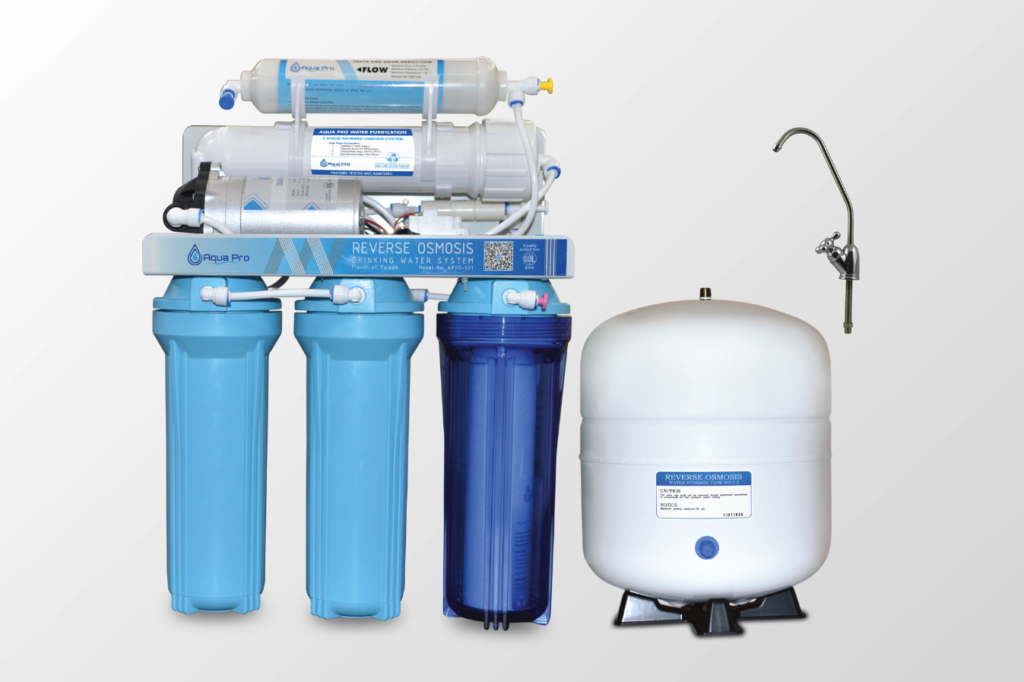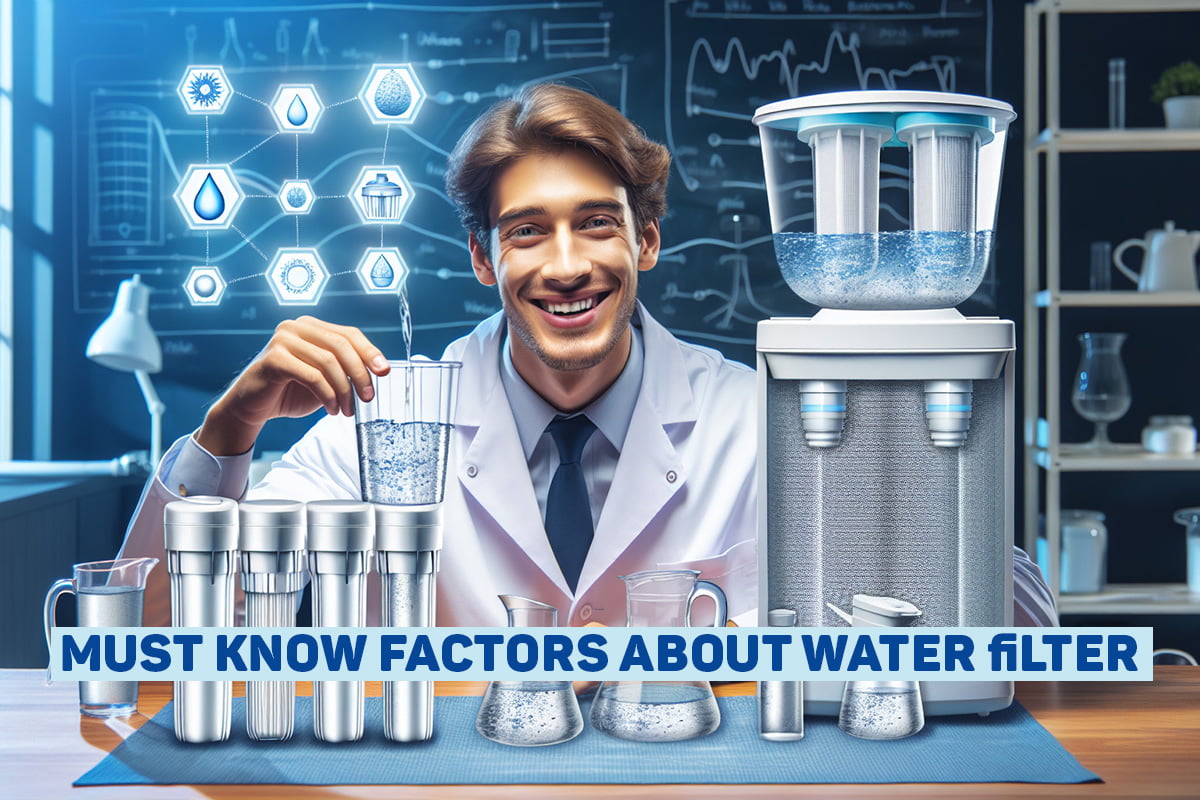Have you ever wondered what’s really in your tap water? 🚰 From chlorine and sediment to potentially harmful contaminants, the water flowing from your faucet might not be as pure as you think. That’s where water filters come in – your unsung heroes in the quest for clean, safe drinking water.
But how exactly do these devices work their magic? 🧙♂️ Whether you’re considering investing in a water filter or simply curious about the science behind them, understanding the inner workings of these essential household items can be fascinating. From activated carbon to reverse osmosis, the world of water filtration is more complex – and ingenious – than you might imagine.
In this blog post, we’ll dive deep into the mechanics of water filters, exploring the various types, the complicated filtration process, and the key components that make it all possible. We’ll also discuss the efficiency and effectiveness of different filtration methods, and provide guidance on choosing the right water filter for your kitchen. So, let’s embark on this journey to uncover the secrets behind crystal-clear, great-tasting water! 💧
Water filters come in various types, each designed to tackle specific contaminants and provide clean, safe drinking water.
Table of Contents
How Water Filter Works
A. Activated Carbon Filters
Activated carbon filters are among the most popular and cost-effective water filtration systems. They work by:
- Adsorbing impurities onto the surface of carbon particles
- Removing chlorine, sediment, and organic compounds
- Improving taste and odor of water
| Pros | Cons |
|---|---|
| Affordable | May not remove all contaminants |
| Easy to maintain | Requires regular filter replacement |
| Improves taste and odor | Less effective against minerals and metals |
B. Ceramic Filters
Ceramic filters are known for their effectiveness in removing bacteria and protozoa from water. Key features include:
- Porous ceramic material with microscopic holes
- Trapping of contaminants as water passes through
- Long-lasting and reusable design
C. UV Purification
UV purification uses ultraviolet light to neutralize harmful microorganisms in water:
- Destroys bacteria, viruses, and other pathogens
- Chemical-free purification process
- Quick and efficient method
D. Reverse Osmosis Systems
Reverse osmosis (RO) is a highly effective filtration method that removes a wide range of contaminants:
- Forces water through a semi-permeable membrane
- Removes up to 99% of dissolved solids, including:
- Minerals
- Heavy metals
- Bacteria
- Viruses
| Advantages | Disadvantages |
|---|---|
| Highly effective | Wastes some water during filtration |
| Removes multiple contaminants | Requires professional installation |
| Improves water taste | May remove beneficial minerals |
Now that we’ve covered the main types of water filters, let’s delve into the filtration process to understand how these systems purify water.

The Filtration Process
The process of water filtration involves several stages, each designed to target specific contaminants and impurities. Let’s explore the key steps in this intricate process:
A. Mineral Retention
Water filters are designed to retain beneficial minerals while removing harmful contaminants. This process, known as selective filtration, ensures that essential minerals like calcium and magnesium remain in the water, contributing to its taste and nutritional value.
B. Biological Contaminant Elimination
One of the most critical functions of a water filter is the removal of biological contaminants. This step typically involves:
- Microfiltration
- Ultrafiltration
- UV sterilization
| Method | Pore Size | Contaminants Removed |
|---|---|---|
| Microfiltration | 0.1-10 microns | Bacteria, protozoa |
| Ultrafiltration | 0.001-0.1 microns | Viruses, proteins |
| UV Sterilization | N/A | Bacteria, viruses |
C. Chemical Absorption
Chemical absorption is crucial for removing dissolved contaminants. This process typically uses activated carbon, which has a large surface area and can effectively trap various chemicals:
- Chlorine
- Pesticides
- Herbicides
- Volatile Organic Compounds (VOCs)
D. Sediment Removal
The final stage often involves sediment removal, which filters out larger particles:
- Sand
- Silt
- Rust
- Other suspended solids
This step not only improves water clarity but also protects subsequent filtration stages from clogging.
Now that we understand the filtration process, let’s examine the key components that make up a water filter system.
Key Components of a Water Filter
Understanding the key components of a water filter is essential to grasp how these systems effectively purify water. Let’s explore the crucial elements that work together to provide clean, safe drinking water.
A. Inlet and Outlet Valves
Inlet and outlet valves control the flow of water through the filtration system. The inlet valve allows unfiltered water to enter the system, while the outlet valve releases the purified water. These valves play a crucial role in maintaining proper pressure and flow rate throughout the filtration process.
B. Monitoring Systems
Modern water filters often include monitoring systems to ensure optimal performance. These may include:
- Filter life indicators
- Water quality sensors
- Flow rate monitors
| Monitoring Feature | Function |
|---|---|
| Filter life indicator | Tracks filter usage and alerts when replacement is needed |
| Water quality sensor | Measures contaminant levels in filtered water |
| Flow rate monitor | Ensures consistent water flow through the system |
C. Pressure Regulators
Pressure regulators maintain the ideal water pressure within the filtration system. This component is crucial for:
- Preventing damage to filter media
- Ensuring efficient contaminant removal
- Maintaining consistent water flow
D. Housing
The housing is the outer shell that contains and protects the internal components of the water filter. It’s typically made of durable materials like plastic or stainless steel to withstand constant water exposure and pressure.
E. Filter Media
At the heart of any water filter is the filter media, which is responsible for removing contaminants from the water. Common types of filter media include:
- Activated carbon
- Ceramic filters
- Reverse osmosis membranes
- Ion exchange resins
Each type of filter media targets specific contaminants, making the choice of media crucial for addressing particular water quality issues.
Now that we’ve explored the key components of a water filter, let’s examine how these elements work together to ensure the efficiency and effectiveness of the filtration process.
Now that we’ve explored the key components of a water filter, let’s dive into how we measure their performance. The efficiency and effectiveness of a water filter are crucial factors in determining its overall quality and suitability for your needs.
A. Lifespan of Filter Elements
The longevity of filter elements plays a significant role in a water filter’s efficiency. Different types of filters have varying lifespans:
- Activated carbon filters: 2-6 months
- Reverse osmosis membranes: 2-3 years
- Ceramic filters: 6-12 months
- UV filters: 9-12 months
| Filter Type | Average Lifespan |
|---|---|
| Activated Carbon | 2-6 months |
| Reverse Osmosis | 2-3 years |
| Ceramic | 6-12 months |
| UV | 9-12 months |
Regular replacement of filter elements ensures optimal performance and prevents contamination from accumulated particles.
B. Contaminant Removal Capacity
A filter’s effectiveness is measured by its ability to remove specific contaminants. Different filters excel at removing various pollutants:
- Activated carbon: Excellent for removing chlorine, volatile organic compounds (VOCs), and improving taste and odor
- Reverse osmosis: Highly effective at removing dissolved solids, heavy metals, and microorganisms
- Ceramic filters: Great for removing bacteria and protozoa
- UV filters: Effective at inactivating microorganisms like bacteria and viruses
C. Flow Rate
The flow rate of a water filter impacts its practicality for everyday use. A higher flow rate means faster water delivery, but it may come at the cost of reduced filtration efficiency. Typical flow rates range from:
- 0.5 gallons per minute (GPM) for under-sink filters
- 2-3 GPM for whole-house systems
D. Micron Rating
The micron rating indicates the size of particles a filter can remove. Lower micron ratings mean finer filtration:
- 5 microns: Removes sand, dirt, and debris
- 1 micron: Filters out most bacteria and protozoa
- 0.5 microns: Captures smaller bacteria and some viruses
- 0.1 microns or less: Removes virtually all microorganisms
Understanding these factors helps in selecting a water filter that best suits your specific needs and water quality concerns.
Choosing the Right Water Filter
Now that we’ve explored the various aspects of water filtration, let’s focus on selecting the most suitable water filter for your needs. This decision is crucial for ensuring clean, safe drinking water in your home.
A. Budget Considerations
When choosing a water filter, it’s essential to balance cost with effectiveness. Here’s a comparison of different filter types and their typical price ranges:
| Filter Type | Initial Cost | Ongoing Costs | Lifespan |
|---|---|---|---|
| Pitcher | $20 – $50 | $30 – $60/year | 2-6 months |
| Faucet-mounted | $30 – $100 | $60 – $120/year | 2-3 months |
| Under-sink | $100 – $500 | $50 – $100/year | 6-12 months |
| Whole-house | $500 – $3000+ | $100 – $200/year | 3-5 years |
B. Considering Household Water Usage
Your household’s water consumption plays a significant role in selecting the right filter. Consider the following factors:
- Number of people in your household
- Daily water consumption
- Frequency of filter replacements
C. Identifying Specific Contaminants
Different filters target various contaminants. To choose effectively:
- Test your water quality
- Identify specific contaminants present
- Select a filter that addresses those contaminants
D. Assessing Water Quality
Understanding your water quality is crucial. Here are steps to assess it:
- Obtain a water quality report from your local utility
- Conduct a home water test
- Consult with a water treatment professional
By considering these factors, you can make an informed decision about the most suitable water filter for your home, ensuring clean and safe drinking water for you and your family.
Water filters are essential tools for ensuring clean, safe drinking water. From activated carbon to reverse osmosis systems, various types of filters employ different mechanisms to remove contaminants. The filtration process typically involves multiple stages, each targeting specific impurities. Key components such as filter media, membranes, and cartridges work together to trap particles, chemicals, and microorganisms.
When selecting a water filter, consider factors like your water source, specific contaminants present, and desired level of purification. Regular maintenance and timely replacement of filter components are crucial for optimal performance. By understanding how water filters work and choosing the right system for your needs, you can enjoy cleaner, better-tasting water while protecting your health and the environment.

